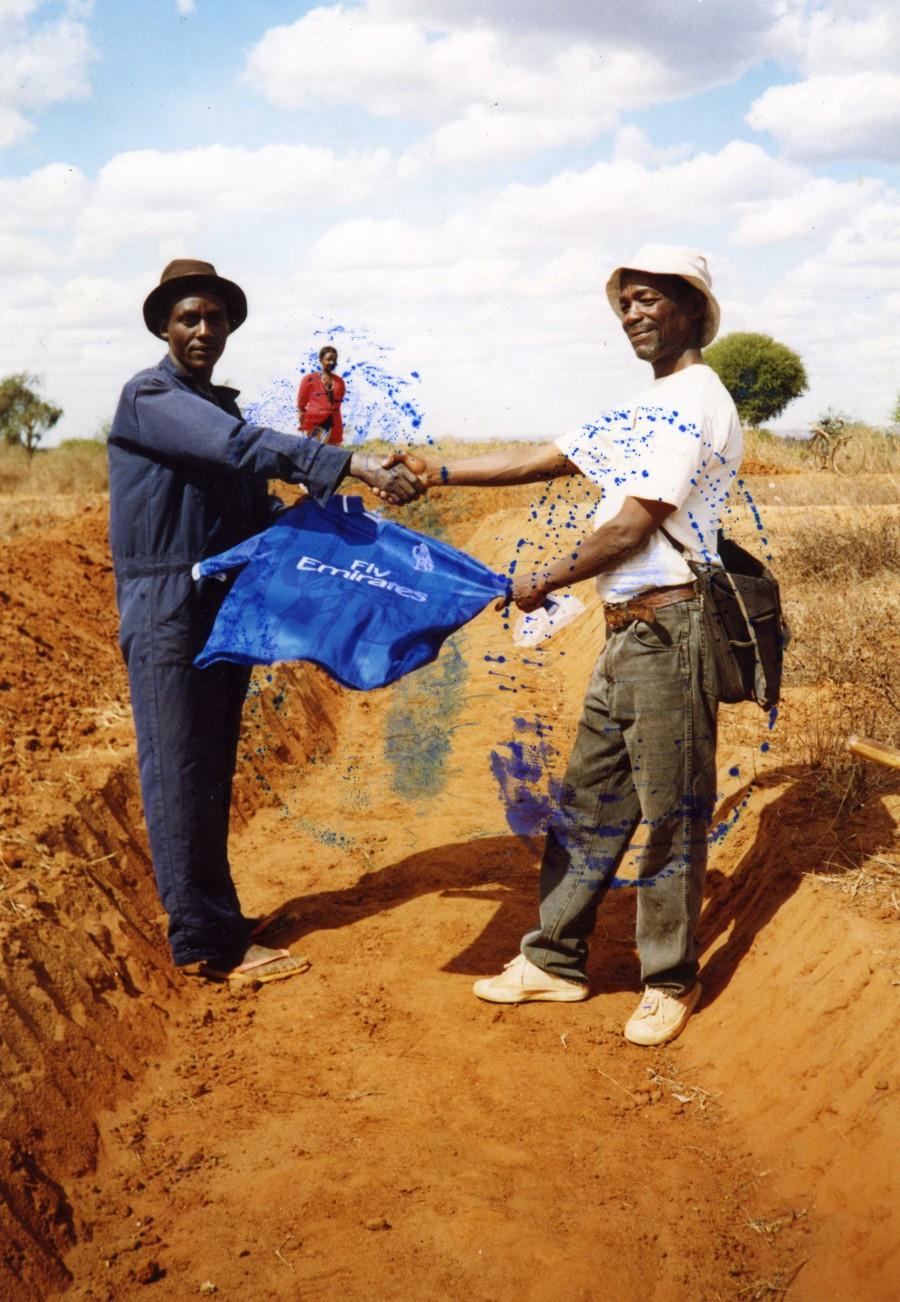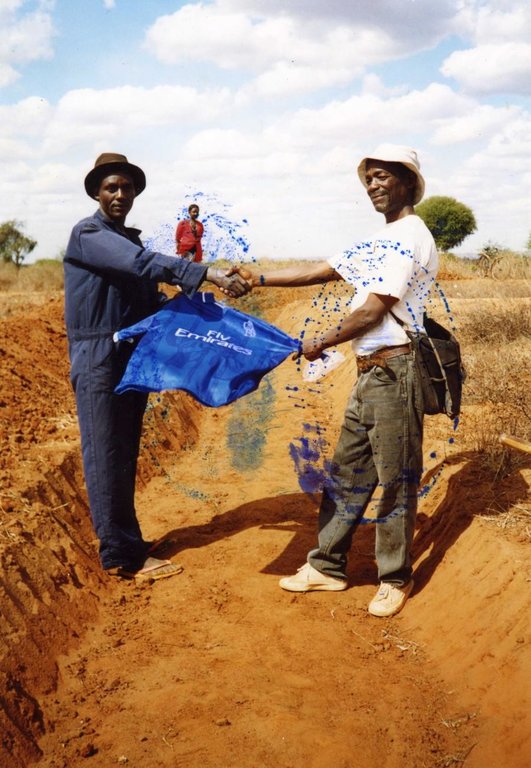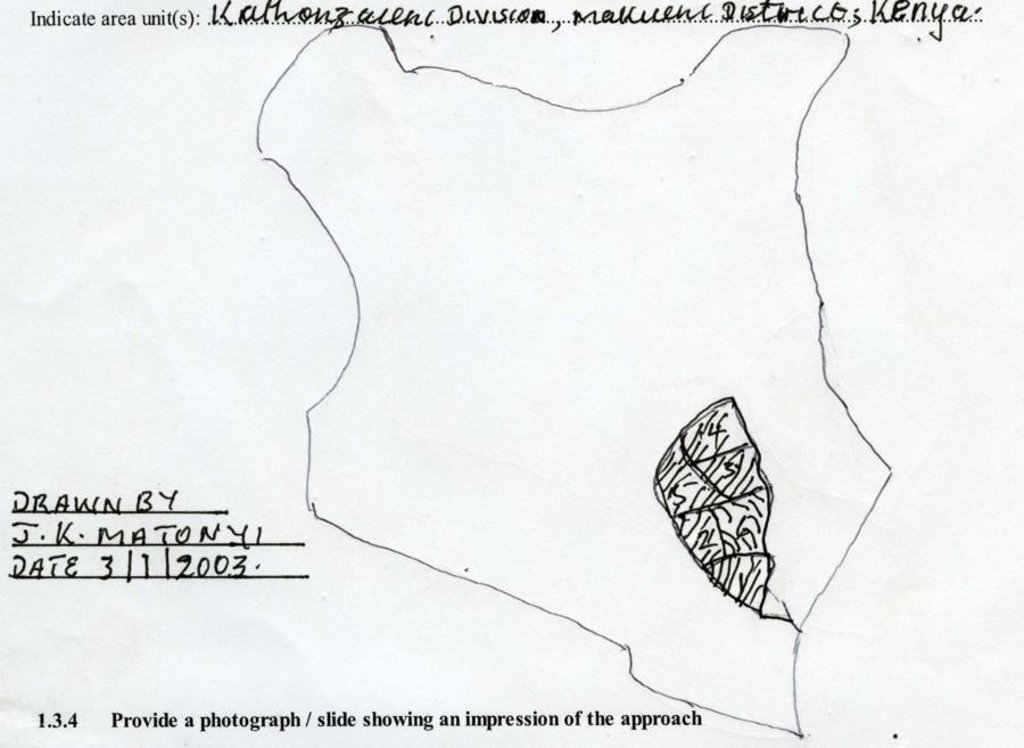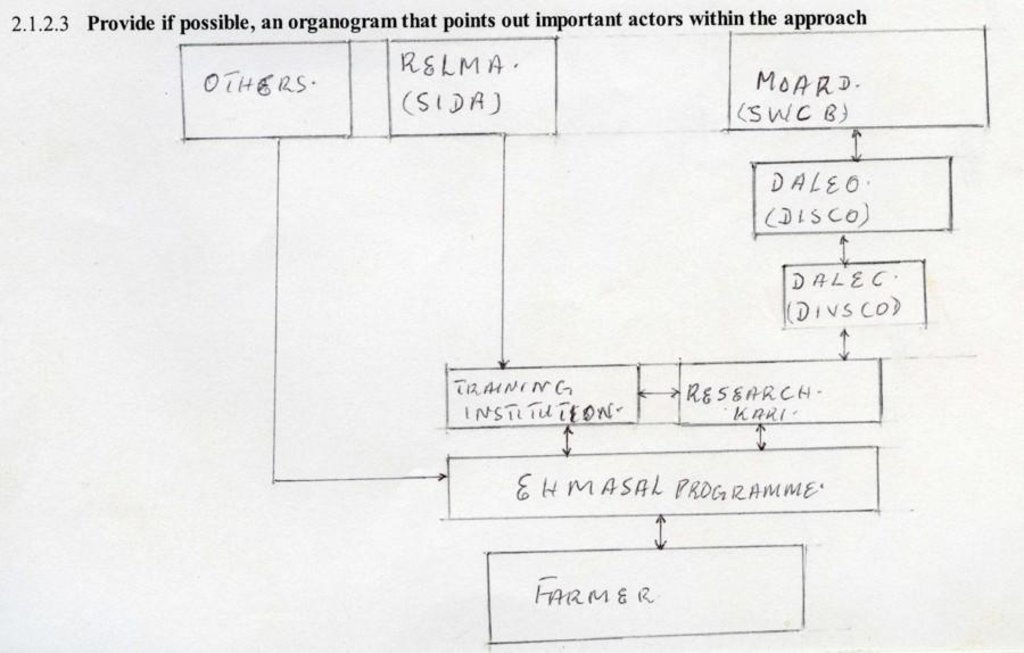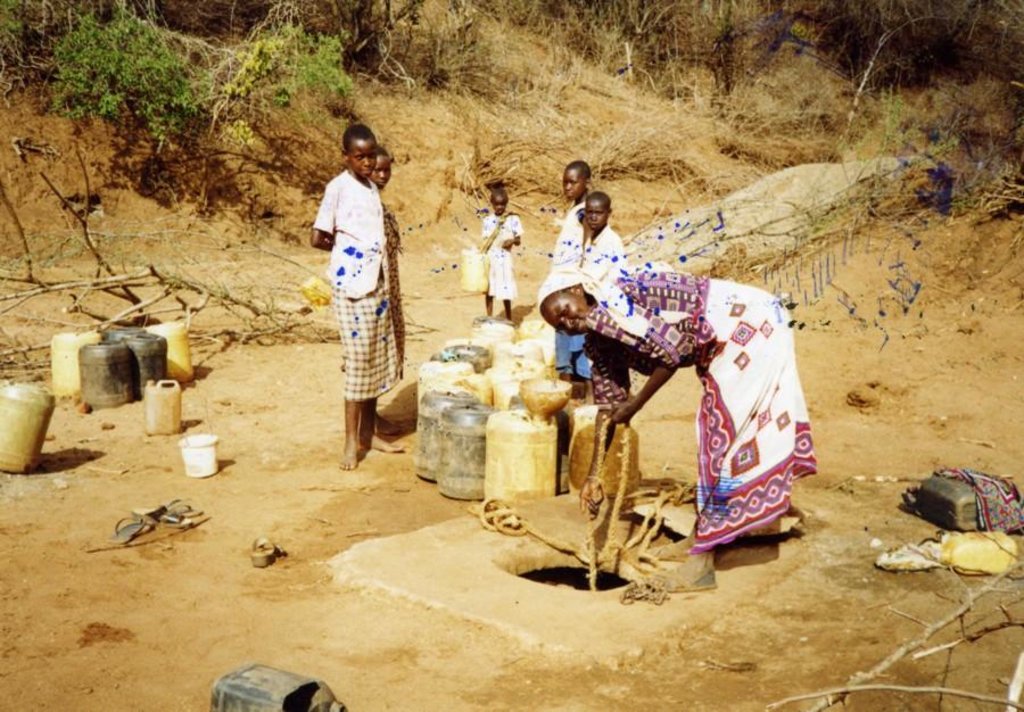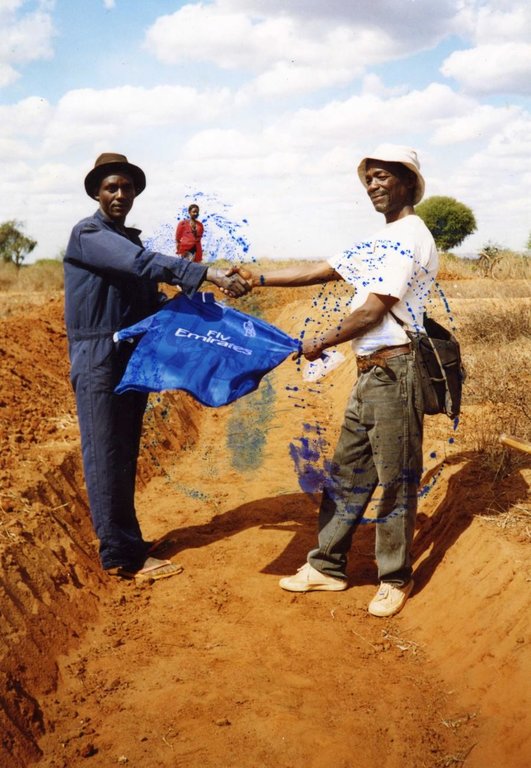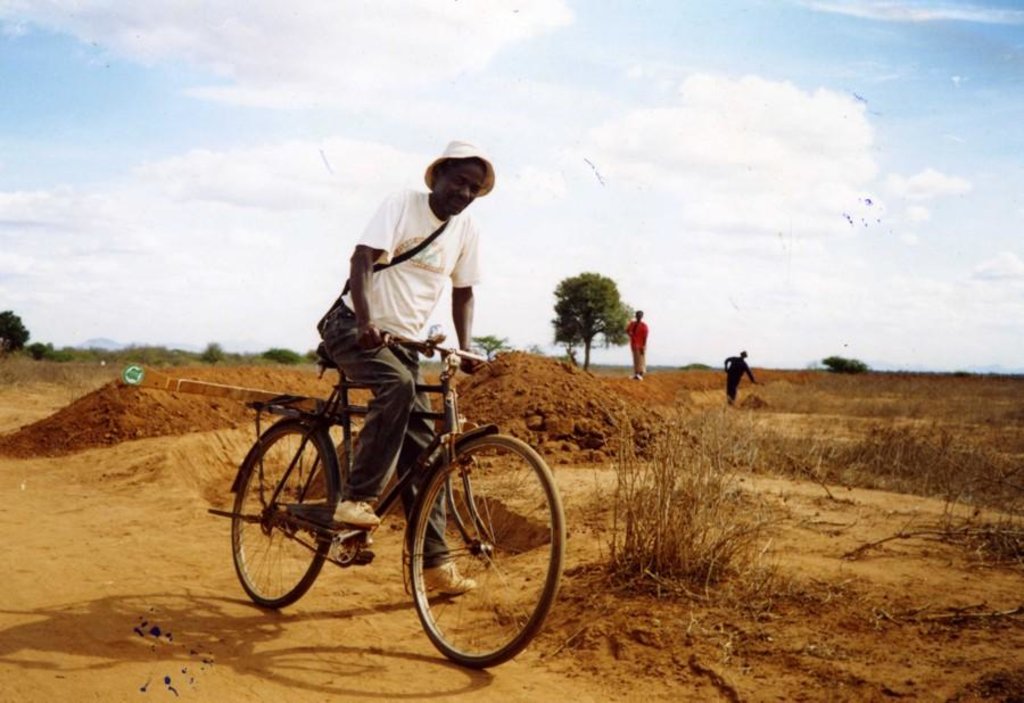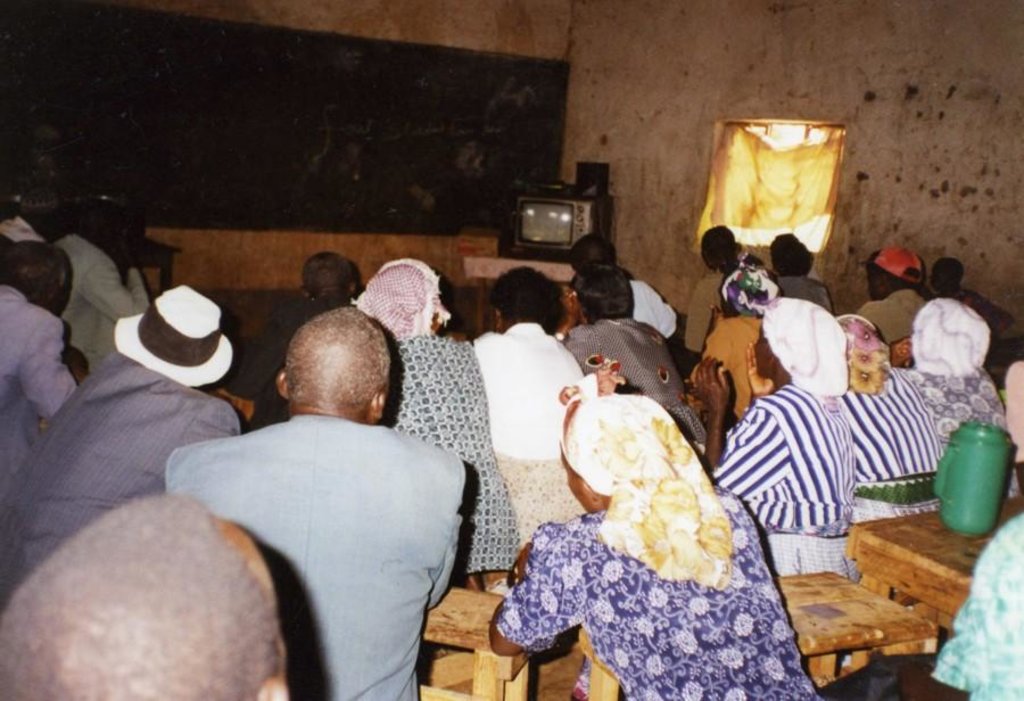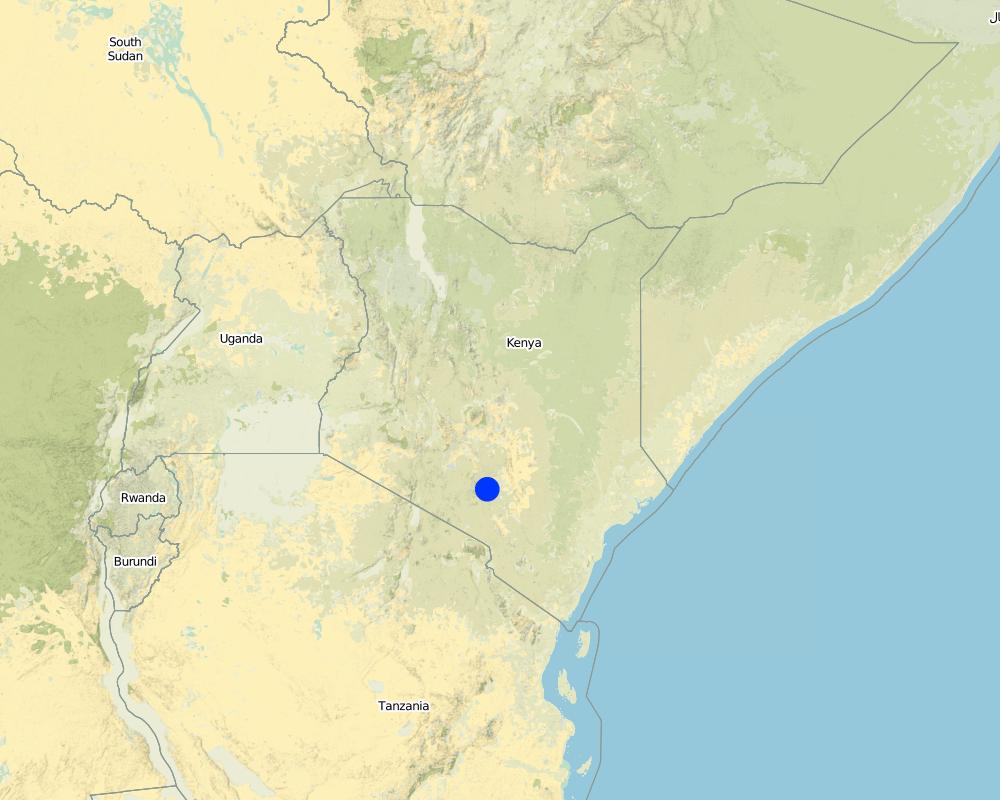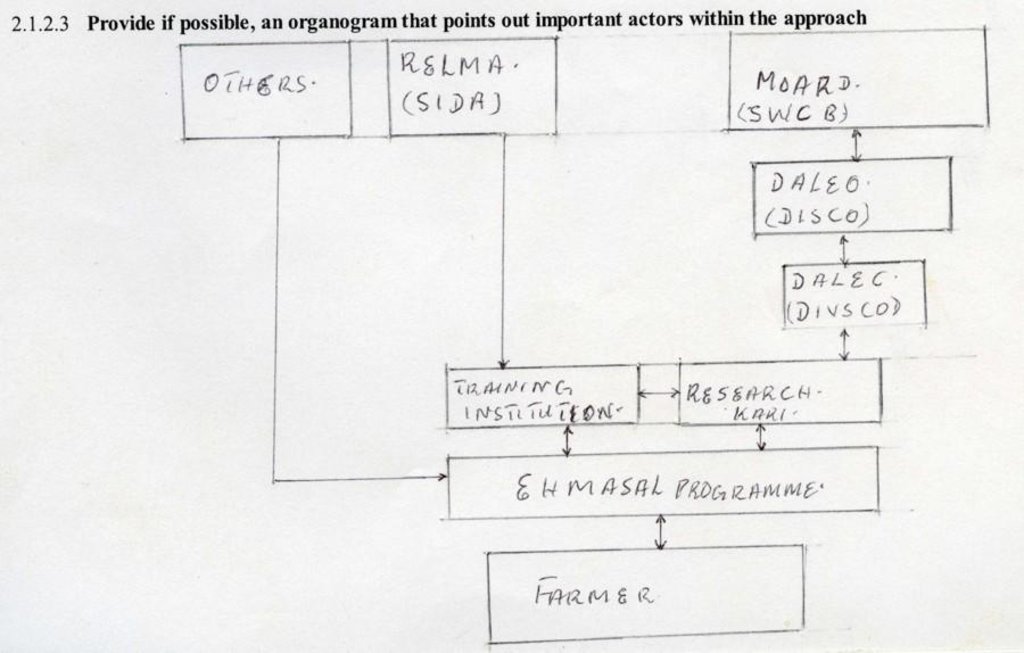water harvesting [ເຄັນຢາ]
- ການສ້າງ:
- ປັບປູງ:
- ຜູ້ສັງລວມຂໍ້ມູນ: Philippe Zahner
- ບັນນາທິການ: –
- ຜູ້ທົບທວນຄືນ: Fabian Ottiger
approaches_2356 - ເຄັນຢາ
ເບິ່ງພາກສ່ວນ
ຂະຫຍາຍທັງໝົດ ຍຸບທັງໝົດ1. ຂໍ້ມູນທົ່ວໄປ
1.2 ລາຍລະອຽດ ການຕິດຕໍ່ ຂອງບຸກຄົນທີ່ຊັບພະຍາກອນ ແລະ ສະຖາບັນ ການມີສ່ວນຮ່ວມ ໃນການປະເມີນຜົນ ແລະ ເອກະສານ ຂອງວິທີທາງ
ຜູ້ຊ່ຽວຊານ ດ້ານການຄຸ້ມຄອງ ທີ່ດິນແບບຍືນຍົງ:
ຜູ້ຊ່ຽວຊານ ດ້ານການຄຸ້ມຄອງ ທີ່ດິນແບບຍືນຍົງ:
Mutunga Kathinji
Ministry of agriculture and rural development national SWC branch.
P.O.Box 30028 Nairobi
ເຄັນຢາ
ຜູ້ຊ່ຽວຊານ ດ້ານການຄຸ້ມຄອງ ທີ່ດິນແບບຍືນຍົງ:
Adual Alex R.
RELMA/SIDA ICRAF house
P.O.Box 63403 Nairobi
ເຄັນຢາ
ຊື່ຂອງ ສະຖາບັນການຈັດຕັ້ງ ທີ່ອໍານວຍຄວາມສະດວກ ໃນການສ້າງເອກກະສານ ຫຼື ປະເມີນແນວທາງ (ຖ້າກ່ຽວຂ້ອງ)
Swiss Agency for Development and Cooperation (DEZA / COSUDE / DDC / SDC) - ສະວິດເຊີແລນຊື່ຂອງ ສະຖາບັນການຈັດຕັ້ງ ທີ່ອໍານວຍຄວາມສະດວກ ໃນການສ້າງເອກກະສານ ຫຼື ປະເມີນແນວທາງ (ຖ້າກ່ຽວຂ້ອງ)
Ministry of Agriculture, Livestock and Fisheries (MoA) - ເຄັນຢາຊື່ຂອງ ສະຖາບັນການຈັດຕັ້ງ ທີ່ອໍານວຍຄວາມສະດວກ ໃນການສ້າງເອກກະສານ ຫຼື ປະເມີນແນວທາງ (ຖ້າກ່ຽວຂ້ອງ)
International Centre for Research in Agroforestry (ICRAF) - ເຄັນຢາ1.3 ເງື່ອນໄຂ ຂອງການນໍາໃຊ້ເອກກະສານຂໍ້ມູນ ຂອງ WOCAT
ຜູ້ສັງລວມ ແລະ ບັນດາຜູ້ຕອບແບບສອບຖາມ ຍອມຮັບໃນເງື່ອນໄຂ ການນໍາໃຊ້ຂໍ້ມູນເອກະສານ ທີ່ສ້າງຂື້ນ ໂດຍຜ່ານ ອົງການ WOCAT:
ແມ່ນ
1.4 ເອກະສານອ້າງອີງ (ຫຼາຍ) ກັບແບບສອບຖາມ (ຫຼາຍ) ເຕັກໂນໂລຢີ ຂອງດ້ານການຄຸ້ມຄອງ ດິນແບບຍືນຍົງ
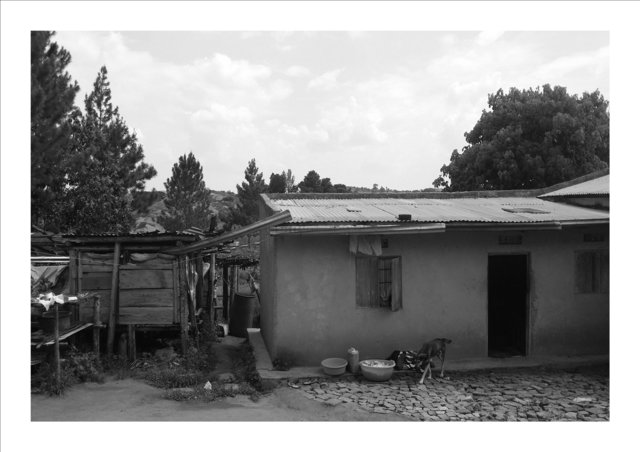
Wooden water reservoir for rain water harvesting. [ອູເຈນດາ]
A gutter system constructed on the farmer’s house-roof collects rainwater and directs it into a constructed reservoir raised off the ground with interior walls lined with water-proof tarpaulin. The reservoir has a maximum capacity of 8,000 liters of water; clean enough for irrigation, livestock and domestic use during seasons of …
- ຜູ້ສັງລວມຂໍ້ມູນ: Aine Amon
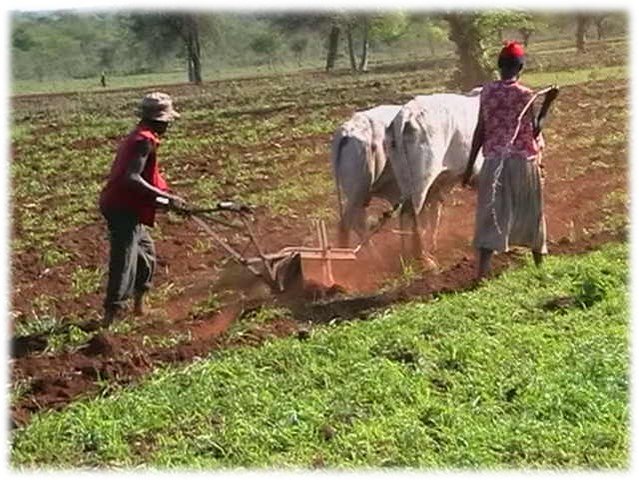
Micro-catchments for rainwater harvesting [ເຄັນຢາ]
Ox-ploughed furrow micro-catchments are intentionally built as part of seedbed preparation to harvest rainwater. Commonly used in dryland environments, the micro-catchment prolong water availability for seed germination and growth and development of the emerging seedlings.
- ຜູ້ສັງລວມຂໍ້ມູນ: Kevin Mganga
2. ພັນລະນາ ແນວທາງການຄຸ້ມຄອງນໍາໃຊ້ດິນແບບຍືນຍົງ
2.1 ການອະທິບາຍ ໂດຍຫຍໍ້ ຂອງວິທີທາງ
Water harvesting for agricultural production in ASALS.
2.2 ການອະທິບາຍ ລາຍລະອຽດ ຂອງວິທີທາງ
ການອະທິບາຍ ລາຍລະອຽດ ຂອງວິທີທາງ:
Aims / objectives: Water harvesting to enhance extra moisture and for reduced risks of crop failure. The technology combines retention/infiltration ditches, bench terraces, appropriate tillaging, manure use, water channels diverting run off from either high ways or natural waterways and stabilization of SWC embankment. Implementation is made by land users with guidance of SWC specialists. Land users may be a group or individual, though the land use type is individual ownership.
Other important information: Most of part 2: specification of SWC approach, QA2.11.3-QA2.5.2.3 were answered with assumptions since there never existed other projects in the area before this indigeneous one known as extra humid in arid and semi-arid lands (EHMASAL) programme established in 2000 to provide land users with the existing SWC technologies and methods of approaches to meet the prevailing need of self-sufficience and food security. The programme strategies are attached.
2.3 ຮູບພາບຂອງແນວທາງ
2.5 ປະເທດ / ເຂດ / ສະຖານທີ່ບ່ອນທີ່ແນວທາງໄດ້ຖືກນໍາໃຊ້
ປະເທດ:
ເຄັນຢາ
ພາກພື້ນ / ລັດ / ແຂວງ:
Eastern province
Map
×2.6 ວັນທີເລີ່ມຕົ້ນ ແລະ ສິ້ນສຸດ ການຈັດຕັ້ງປະຕີບັດ ວິທີທາງ
ສະແດງປີຂອງການເລີ່ມຕົ້ນ:
2000
2.7 ປະເພດຂອງແນວທາງ
- ພາຍໃຕ້ໂຄງການ / ແຜນງານ
2.8 ເປົ້າໝາຍ / ຈຸດປະສົງຫຼັກ ຂອງການຈັດຕັ້ງປະຕິບັດ ວິທີທາງ
The Approach focused mainly on SLM with other activities (Timeliness in planting/transplanting, seed selection, seedlings variety and breeds for the AEZ.)
To harvest runoff and spread it on cropped area to maximize agricultural productivity. To improve crop moisture requiremnet. To reduce risks of crop failure stimulated by aridity in ASALs. To control soil erosion by water and wind. To improve the inflitration rate. To enhance food security for self-sufficiency and reliance.
The SLM Approach addressed the following problems: Inadequency of soil moisture resulting to crop failure. Inefficiency of approach to improve the situation. Fertility depletion due to continuous cultivation. Soil crusting caused by erosion, poor tillaging, overgrazing and deforestation (degadation).
2.9 ເງື່ອນໄຂອໍານວຍ ຫຼື ຂັດຂວາງການປະຕິບັດຂອງເຕັກໂນໂລຢີ / ເຕັກໂນໂລຢີການນໍາໃຊ້ຕາມແນວທາງ
ມີຄວາມສາມາດ / ເຂັ້າເຖິງຊັບພະຍາກອນດ້ານການເງິນ ແລະ ການບໍລິການ
- ເຊື່ອງຊ້ອນ
The much need be done on SWC in ASAL is beyond the sole land user for hand
Treatment through the SLM Approach: It requires financial support by source of loans and market orientation
ກ່ຽວກັບກົດໝາຍ (ສິດນໍາໃຊ້ດິນ, ສິດນໍາໃຊ້ນໍ້າ)
- ອໍານວຍ
The existing land ownership, land use rights / water rights greatly helped the approach implementation: Land ownership/land use rights help implementation of the approach since benefits are realized by the sole land user.
- ເຊື່ອງຊ້ອນ
No empowerment on land use law or bylaws
Treatment through the SLM Approach: Enforcement by legislation on land use policy.
ຄວາມຮູ້ກ່ຽວກັບການຄຸ້ມຄອງ ທີ່ດິນແບບຍືນຍົງ, ການເຂົ້າເຖິງການສະໜັບສະໜູນ ທາງດ້ານວິຊາການ
- ເຊື່ອງຊ້ອນ
poor land treatment-plans, poor land husbandry, low knowledge
Treatment through the SLM Approach: Interaction in land use change, especially with SWC specialists
3. ການມີສ່ວນຮ່ວມ ແລະ ບົດບາດຂອງພາກສ່ວນທີ່ກ່ຽວຂ້ອງທີ່ໄດ້ມີສ່ວນຮ່ວມ
3.1 ຜູ້ມີສ່ວນຮ່ວມ ໃນວິທີທາງ ແລະ ພາລະບົດບາດ ຂອງເຂົາເຈົ້າ
- ຜູ້ນໍາໃຊ້ດິນໃນທ້ອງຖິ່ນ / ຊຸມຊົນທ້ອງຖິ່ນ
Land user/local SWC specialists. Working land users were work equally divided between men and women (The family leader organizes for activity implementation either family labour or casuals). Women are majority for reason that men are engaged on off-farm. Employmentproportion is about 3 women to 1 man. Mostly women in public meetings and open field days
- ຜູ້ຊ່ຽວຊານ ການນຄຸ້ມຄອງ ທີ່ດິນແບບຍືນຍົງ / ທີ່ປຶກສາດ້ານກະສິກໍາ
- ພະນັກງານຂັ້ນສູນກາງ (ຜູ້ວາງແຜນ, ຜູ້ສ້າງນະໂຍບາຍ)
Water harvest for agricultural production RESCU 1996. Run off farming ministry of agriculture, Nairobi
3.2 ການມີສ່ວນຮ່ວມຂອງຜູ້ນໍາໃຊ້ທີ່ດິນໃນທ້ອງຖິ່ນ / ຊຸມຊົນທ້ອງຖິ່ນໃນໄລຍະທີ່ແຕກຕ່າງກັນຂອງແນວທາງ
| ການລວບລວມ ເອົາຜູ້ນໍາໃຊ້ດິນ ໃນທ້ອງຖິ່ນ / ຊຸມຊົນທ້ອງຖິ່ນ | ໃຫ້ລະບຸ ຜູ້ໃດທີ່ມີສ່ວນຮ່ວມ ໃນແຕ່ລະກິດຈະກໍາ? | |
|---|---|---|
| ການເລີ່ມຕົ້ນ / ແຮງຈູງໃຈ | ການຮ່ວມມື | Mainly:public meetings; partly: workshops/seminars; public meetings for initial awareness. Workshops/seminars for technical assistance for approach |
| ການວາງແຜນ | ການຮ່ວມມື | Mainly: workshops/seminars; partly: public meetings; innovators land users seminar |
| ການປະຕິບັດ | ການນໍາໃໍຊ້ເອງ | |
| ຕິດຕາມກວດກາ / ການປະເມີນຜົນ | ບໍ່ມີ | Mainly: reporting; partly: measurements/observations; correct dimensions, monthly progress report |
| Research | ບໍ່ມີ |
3.3 ແຜນວາດ (ຖ້າມີ)
3.4 ການຕັດສິນໃຈກ່ຽວກັບການຄັດເລືອກເຕັກໂນໂລຢີຂອງການຄຸ້ມຄອງທີ່ດິນແບບຍືນຍົງ / ເຕັກໂນໂລຢີ
ລະບຸ ຄົນທີ່ຕັດສິນໃຈ ກ່ຽວກັບການຄັດເລືອກຂອງ ເຕັກໂນໂລຢີ / ເຕັກໂນໂລຢີ ຈະໄດ້ຮັບການປະຕິບັດ:
- ຜູ້ຊ່ຽວຊານ ຫຼັກດ້ານການຄຸ້ມຄອງ ທີ່ດິນແບບຍືນຍົງ, ມີການຕິດຕາມປຶກສາຫາລືກັບຜູ້ນໍາໃຊ້ທີ່ດິນ
ອະທິບາຍ:
consultative for land use change
Decisions on the method of implementing the SLM Technology were made by mainly by land users supported by SLM specialists. land users implemented voluntarily.
4. ການສະໜັບສະໜູນທາງດ້ານວິຊາການ, ການສ້າງຄວາມສາມາດ, ແລະ ການຈັດການຄວາມຮູ້.
4.1 ການສ້າງຄວາມສາມາດ / ການຝຶກອົບຮົມ
ຜູ້ນໍາໃຊ້ທີ່ດິນ ຫຼື ພາກສ່ວນກ່ຽວຂ້ອງອື່ນໆ ໄດ້ຮັບການຝຶກອົບຮົມບໍ່?
ແມ່ນ
ໃຫ້ລະບຸ ຜູ້ໃດທີ່ໄດ້ຮັບການຝຶກອົບຮົມ:
- ຜູ້ນໍາໃຊ້ດິນ
- extensionists/trainers
ຮູບແບບຂອງການຝຶກອົບຮົມ:
- ການເຮັດຕົວຈິງ
- ເນື້ອທີ່ສວນທົດລອງ
- ກອງປະຊຸມ
ໃນຫົວຂໍ້:
Only field days and practical substitutes training for a fact that the programme has no source of finance to support trainings.
4.2 ການບໍລິການໃຫ້ຄໍາປຶກສາ
ເຮັດຜູ້ໃຊ້ທີ່ດິນມີການເຂົ້າເຖິງການບໍລິການໃຫ້ຄໍາປຶກສາ?
ແມ່ນ
ອະທິບາຍ / ຄວາມຄິດເຫັນ:
Runoff farming (water harvesting); Key elements: Infiltration/retention ditches, level bench terraces, soil structure, texture and fertility improvement, macro/micro catchment water harvest bund; 1) Advisory service was carried out through: non-governmental agency 2) Target groups for extension: land users; Activities: SWC activities, water harvest
Advisory service is inadequate to ensure the continuation of land conservation activities; Staff farmer ratio is too high to induce land use change
4.3 ສະຖາບັນການສ້າງຄວາມເຂັ້ມແຂງ (ການພັດທະນາອົງການຈັດຕັ້ງ)
ສະຖາບັນ ໄດ້ຮັບການສ້າງຕັ້ງຂື້ນ ຫຼື ໄດ້ຮັບການສ້າງຄວາມເຂັ້ມແຂງ ໂດຍການຈັດຕັ້ງປະຕິບັດ ວິທີທາງບໍ່?
- ມີ, ໜ້ອຍໜຶ່ງ
ລະບຸ ທາງສະຖາບັນ ໄດ້ສ້າງຄວາມເຂັ້ມແຂງ ໃນລະດັບໃດ (ຫຼາຍ):
- ທ້ອງຖິ່ນ
ລະບຸ ປະເພດ ຂອງສະໜັບສະໜູນ:
- ການສ້າງຄວາມອາດສາມາດ / ການຝຶກອົບຮົມ
4.4 ຕິດຕາມກວດກາ ແລະ ປະເມີນຜົນ
ການຈັດຕັ້ງປະຕິບັດ ວິທີທາງ ໄດ້ມີການປະເມີນຜົນ ແລະ ຕິດຕາມບໍ?
ແມ່ນ
ຄວາມຄິດເຫັນ:
Area treated aspects were regular monitored through measurements
no. of land users involved aspects were ad hoc monitored through observations
There were no changes in the Approach as a result of monitoring and evaluation: The changes may come up season after season due to rainfall characteristics in arid areas. The period is rather short to make a conclusion. No change observed hither to.
4.5 ການຄົ້ນຄວ້າ
ນີ້້ແມ່ນສ່ວນໜຶ່ງ ການຄົ້ນຄວ້າ ຂອງວິທີທາງບໍ່?
ແມ່ນ
ລະບຸ ຫົວຂໍ້:
- ລະບົບນິເວດ
- ເຕັກໂນໂລຢີ
ໃຫ້ຂໍ້ມູນ ເພີ່ມເຕີມ ແລະ ກໍານົດ ຜູ້ໃດເຮັດການຄົ້ນຄວ້າ:
The existing SWC recommendations were released through the institution
Research was carried out both on station and on-farm
5. ການສະໜັບສະໜູນທາງດ້ານການເງິນ ແລະ ອຸປະກອນຈາກພາຍນອກ
5.1 ງົບປະມານປະຈໍາປີ ສໍາລັບວິທີທາງ ຂອງການຄຸ້ມຄອງ ທີ່ດິນແບບຍືນຍົງ
ຖ້າຫາກບໍ່ຮູ້ຈັດງົບປະມານທີ່ແນ່ນອນ ແມ່ນໃຫ້ປະມານເອົາ:
- 10,000-100,000
ຄໍາເຫັນ (ຕົວຢ່າງ: ແຫຼ່ງຂໍ້ມູນຫຼັກ ຂອງການສະໜອງທຶນ / ຜູ້ໃຫ້ທຶນທີ່ສໍາຄັນ):
Approach costs were met by the following donors: local community / land user(s) (no external support)
5.3 ເງິນສົມທົບສໍາລັບການນໍາໃຊ້ສະເພາະປັດໃຈຂາເຂົ້າໃນການຜະລີດກະສິກໍາ (ລວມທັງແຮງງານ)
ຖ້າແຮງງານ ຂອງຜູ້ນໍາໃຊ້ດິນ ໄດ້ຮັບການສະໜັບສະໜູນ ປັດໃຈຂາເຂົ້າ, ແມ່ນບໍ່:
- ການອາສາ
5.4 ສິນເຊື່ອ
ໄດ້ປ່ອຍສິນເຊື່ອ ສະໜອງໃຫ້ພາຍໃຕ້ ວິທີການສໍາລັບກິດຈະກໍາ ການຄຸ້ມຄອງ ທີ່ດິນແບບຍືນນຍົງບໍ່?
ບໍ່ແມ່ນ
6. ວິເຄາະຜົນກະທົບ ແລະ ສັງລວມບັນຫາ
6.1 ຜົນກະທົບຂອງແນວທາງ
ການຈັດຕັ້ງປະຕິບັດ ວິທີທາງ ສາມາດຊ່ວຍຜູ້ນໍາໃຊ້ທີ່ດິນ ໃນການຈັດຕັ້ງປະຕິບັດ ແລະ ບໍາລຸງຮັກສາ ເຕັກໂນໂລຢີ ການຄຸ້ມຄອງ ທີ່ດິນແບບຍືນຍົງໄດ້ບໍ?
- ບໍ່
- ມີ, ໜ້ອຍໜຶ່ງ
- ມີ, ພໍສົມຄວນ
- ມີ, ຫຼາຍ
soil management structurally aiming to make use of previously lost runoff for crop production.
ການຈັດຕັ້ງປະຕິບັດ ວິທີທາງ ສາມາດປັບປຸງ ປະເດັນການຖືຄອງທີ່ດິນ / ສິດທິໃນການນໍາໃຊ້ທີ່ດິນ ທີ່ເຊື່ອງຊ້ອນໃນການຈັດຕັ້ງປະຕິບັດ ເຕັກໂນໂລຢີ ການຄຸ້ມຄອງ ທີ່ດິນແບບຍືນຍົງໄດ້ບໍ?
- ບໍ່
- ມີ, ໜ້ອຍໜຶ່ງ
- ມີ, ພໍສົມຄວນ
- ມີ, ຫຼາຍ
Did other land users / projects adopt the Approach?
- ບໍ່
- ມີ, ໜ້ອຍໜຶ່ງ
- ມີ, ພໍສົມຄວນ
- ມີ, ຫຼາຍ
about 20-25% of the other organized groups adopted the approach initially.
6.3 ຄວາມຍືນຍົງຂອງກິດຈະກໍາວິທີທາງ
ຜູ້ນໍາໃຊ້ ທີ່ດິນ ສາມາດສືບຕໍ່ ການຈັດຕັ້ງປະຕິບັດ ຜ່ານວິທີທາງໄດ້ບໍ່ (ໂດຍປາດສະຈາກ ການຊ່ວຍເຫຼືອ ຈາກພາກສ່ວນພາຍນອກ)?
- ແມ່ນ
ຖ້າ ໄດ້, ອະທິບາຍເຫດຜົນ:
About 75% of the land users may continue implementing the SWC activities without financial support in future. What would be required by land user as focused is layout, alignment, generally technology guidance. If other approaches e.g. trainings/seminars were included to all farm production systems.
6.4 ຈຸດແຂງ / ຂໍ້ດີ ຂອງວິທີທາງ
| ຈຸດແຂງ / ຂໍ້ດີ / ໂອກາດໃນການນໍາໃຊ້ທີ່ດິນ |
|---|
| increase weight on food security (How to sustain/ enhance this strength: to acquire knowledge of the land husbandry.) |
| introduces off-farm employment (How to sustain/ enhance this strength: proper measures and practices of water harvesting component.) |
| ຈຸດແຂງ / ຈຸດດີ / ໂອກາດ ຈາກທັດສະນະຂອງຜູ້ປ້ອນຂໍ້ມູນ ຫຼື ບຸກຄົນສຳຄັນ |
|---|
| The approach focuses on food security and self-sufficiency. (How to sustain/ enhance this strength: Regular maintenance of the SWC structures and agroforestry establishment.) |
| Improve the standard of living if adopted by the community. (How to sustain/ enhance this strength: Enforcement of SWC policy by the government to protect technology areas.) |
| Reduces risk of crop failure due to poor rainfall distribution. (How to sustain/ enhance this strength: Introduce policy of land use right/land ownership.) |
| Reduces soil and water losses through erosion. (How to sustain/ enhance this strength: Introduced land use change and land management (land husbandry practices)) |
| Improves national economy as well as family gross income. (How to sustain/ enhance this strength: improvement on market of agricultural products and by-products.) |
6.5 ຈຸດອ່ອນ / ຂໍ້ເສຍຂອງແນວທາງ ແລະ ວິທີການແກ້ໄຂໃຫ້ເຂົາເຈົ້າ
| ຈຸດອ່ອນ / ຂໍ້ເສຍ / ຄວາມສ່ຽງໃນມູມມອງຂອງຜູ້ນໍາໃຊ້ທີ່ດິນ | ມີວິທີການແກ້ໄຂຄືແນວໃດ? |
|---|---|
| poor marketing system for most of agricultural products and byproducts. | formation of cooperative societies |
| slow in adoption on land use change due to longer period of cost return | government introduces enforcement law to discourage communal land use. |
| ຈຸດອ່ອນ ຫຼື ຂໍ້ເສຍ ຫຼື ຄວາມສ່ຽງ ໃນມຸມມອງຂອງ ຜູ້ສັງລວມຂໍ້ມູນ ຫຼື ບັນດາຜູ້ຕອບແບບສອບຖາມ | ມີວິທີການແກ້ໄຂຄືແນວໃດ? |
|---|---|
| regular crop failure due to erratic rainfall patterns | enhance extra moisture by water harvest and spreading it in cropped area |
| consumes time, energy and money to establish. | No soil, no food. No water, no life. Policy of approach |
| interferes with soil fertility and reduces land size by SWC structures. | Manure and fertilizer application regularly to maximize production level. |
| Slow in cost benefit return from a given area. | marketing orientation for farm products |
| Low income sources of the common land users. | Introduced sources of agricultural loan policy for ASALs. |
7. ເອກກະສານອ້າງອີງ ແລະ ຂໍ້ມູນການເຊື່ອມໂຍງ
7.2 ເອກະສານທົ່ວໄປທີ່ສາມາດໃຊ້ໄດ້
ຫົວຂໍ້, ຜູ້ຂຽນ, ປີ, ISBN:
SWC manual for Kenya 1997 by D.B. ThomasSoil conservation in Kenya 1981 by C.G.WennerSWC technology development in Kenya by K:MutungaSony super DXE-180 videoThe sun will still rise videoRunoff, a friend or a foe video
ມີຢູ່ໃສ?ມູນຄ່າເທົ່າໃດ?
agricultiral information centre, freeagricultiral information centre, freeM.A.R.D. SWCB-NBI Kenya, freeSWCB NBI Kenya, freeRELMA/CIDA, freeRELMA/CIDA, free
ຫົວຂໍ້, ຜູ້ຂຽນ, ປີ, ISBN:
Rainfall runoff analysis by Paul Kimeu. 1-11. Feb. 1998
ຫົວຂໍ້, ຜູ້ຂຽນ, ປີ, ISBN:
Water conservation, water harvesting and management (WCHM) scheme design. Practicals (WHIF) exercise. Embu February 1-11 1998
ຫົວຂໍ້, ຜູ້ຂຽນ, ປີ, ISBN:
Method of collecting and storing local surface runoff for water supply in central Asian deserts by Prof A.G. Babaer
ມີຢູ່ໃສ?ມູນຄ່າເທົ່າໃດ?
Desert research institute, Gogolstr.15.
ຫົວຂໍ້, ຜູ້ຂຽນ, ປີ, ISBN:
Study of traditional water harvesting practices in Cost province, by J.O.Owupo, July 1998
ຫົວຂໍ້, ຜູ້ຂຽນ, ປີ, ISBN:
Soil characteristics and properties for water conservation, harvesting and management (WCHM). (WH5) June 29-July 7 1997 by Kithinji Mutunga
ຫົວຂໍ້, ຜູ້ຂຽນ, ປີ, ISBN:
Dryland water harvesting (WH), water conservtion (WC) techniques , by K. Mutunga 9-15 July 1995
ຫົວຂໍ້, ຜູ້ຂຽນ, ປີ, ISBN:
Design procedure for harvesting and conservation system, by Odoyo J. Bittar. ministry of agriculture, Busia-Kenya, February 1-11, 1998
ຫົວຂໍ້, ຜູ້ຂຽນ, ປີ, ISBN:
MINOR ROADS PROGRAMME soil conservation. Pilot project final report 1992agrisystems (EA) Ltd, P.O.Box 39636 Nairobi, free
ມີຢູ່ໃສ?ມູນຄ່າເທົ່າໃດ?
Agrisystems (EA) Ltd, P.O.Box 39636 Nairobi, free
ຫົວຂໍ້, ຜູ້ຂຽນ, ປີ, ISBN:
promoting farmer innovatiion . Workshop report No. 2 by Will Critchley 'RELMA' 1999
ມີຢູ່ໃສ?ມູນຄ່າເທົ່າໃດ?
Free
ຫົວຂໍ້, ຜູ້ຂຽນ, ປີ, ISBN:
mpact assessment study. National soil and water conservation branch, final report 1998
ມີຢູ່ໃສ?ມູນຄ່າເທົ່າໃດ?
Agrisystems (EA) Ltd, P.O.Box 39636 Nairobi, free
ຫົວຂໍ້, ຜູ້ຂຽນ, ປີ, ISBN:
The sustainability of the catchment approach - induced measures and activities, by Yeraswara Admasie (NSWCP). Report in 1998
ມີຢູ່ໃສ?ມູນຄ່າເທົ່າໃດ?
Free
ຫົວຂໍ້, ຜູ້ຂຽນ, ປີ, ISBN:
Where ther is no water. SASOL and by Donald B.Thomas 1999. maji na ufanisi P.O.Box 14893 Nairobi
ມີຢູ່ໃສ?ມູນຄ່າເທົ່າໃດ?
Free
ຫົວຂໍ້, ຜູ້ຂຽນ, ປີ, ISBN:
ater from sand rivers by Erik Nissen Petersen report No.23, RELMA/SIDA. Kenya 2000
ຫົວຂໍ້, ຜູ້ຂຽນ, ປີ, ISBN:
Agroforestry extension manual for northern Zambia, by Henry Chilufya. BO Tengrias , free. RSCU Nairobi technical handbook No.11.
ຫົວຂໍ້, ຜູ້ຂຽນ, ປີ, ISBN:
The hand of man. Soil conservation in Kondoa, eroded area Tanzania, by Carl Christiansson, Alfred Mbegu, Andreas Yrgard, RSCU/SIDA 1993 free
ຫົວຂໍ້, ຜູ້ຂຽນ, ປີ, ISBN:
Nomadic pastoral appraisal SWCB MALDM P.O. Box 30028 Nairobi, by L.I. Mwarasomba
ຫົວຂໍ້, ຜູ້ຂຽນ, ປີ, ISBN:
Curriculum for in service training in agroforestry and related subjects in Kenya. By Stachys M. Muturi. M.A., MENR, Kenya. Forestry research institute, RSCU/SIDA 1992
ຂໍ້ມູນການເຊື່ອມຕໍ່ ແລະ ເນື້ອໃນ
ຂະຫຍາຍທັງໝົດ ຍຸບທັງໝົດການເຊື່ອມຕໍ່

Wooden water reservoir for rain water harvesting. [ອູເຈນດາ]
A gutter system constructed on the farmer’s house-roof collects rainwater and directs it into a constructed reservoir raised off the ground with interior walls lined with water-proof tarpaulin. The reservoir has a maximum capacity of 8,000 liters of water; clean enough for irrigation, livestock and domestic use during seasons of …
- ຜູ້ສັງລວມຂໍ້ມູນ: Aine Amon

Micro-catchments for rainwater harvesting [ເຄັນຢາ]
Ox-ploughed furrow micro-catchments are intentionally built as part of seedbed preparation to harvest rainwater. Commonly used in dryland environments, the micro-catchment prolong water availability for seed germination and growth and development of the emerging seedlings.
- ຜູ້ສັງລວມຂໍ້ມູນ: Kevin Mganga
ເນື້ອໃນ
ບໍ່ມີເນື້ອໃນ


